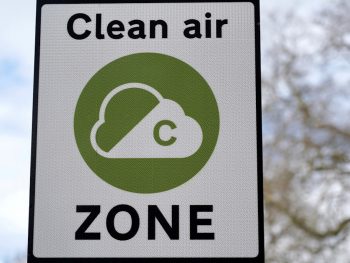Clean Air Zones (CAZs) are top of the list for challenges for fleets over the next five years in new decision-maker research.

Arval Mobility Observatory’s 2021 Barometer finds that concerns over CAZs are named by operators as two of the top three issues that car and van fleets believe they will face before 2026.
When asked “What are the main challenges facing fleets in the next five years?”, the top answer was the introduction of stricter CAZs (35%), followed by increased vehicle taxation (34%) and then the creation of more CAZs (30%).
Congestion caused by road infrastructure (30%) dropped to fourth position, followed by the impact of flexible working (22%), and implementing full mobility solutions (14%) came last.
Shaun Sadlier, head of Arval Mobility Observatory in the UK, said the results indicate that the concerns over CAZs extend well into the medium-term and that fleets are worried about both their proliferation and the rules becoming tougher.
But he said that Arval’s work has showed many fleets that they meet CAZ requirements with relatively small changes to their operations.
“Even for those which are affected, the worry is likely to be transitional as older vehicles are replaced,” he added. “By the end of this decade, the vast majority of company cars, and probably vans too, will be electrified, which will help to solve the emissions zones problem automatically.”
And while increased vehicle taxation came second in fleets’ list of concerns, Sadlier added that the emergence of EVs of all kinds will potentially massively reduce tax liabilities for fleets over the next few years.
In fact, Arval said that perhaps the most striking finding in the research was the sharp reduction in fleets concerned about congestion.
“This is now at 30% compared to 43% in last year’s Arval Mobility Observatory research – a fall almost certainly prompted by reduced road use during the pandemic and which perhaps indicates that fleet managers expect traffic levels to remain lower into the future.”
Furthermore, while the emergence of flexible working, as a result of the pandemic, was also in the list of fleet concerns, Sadlier said that Arval’s experience so far is that very few businesses are looking to move out of company cars as a result of increased home working.
“While almost everyone seems to believe that fewer miles will be driven in the future, the general view is that those miles remain essential for business and personal life.”
Arval Mobility Observatory’s 2021 Barometer research on fleet challenges:
What do you think are the main challenges facing fleets in the next five years (cars and vans combined)?
| Total | Fewer than 10 employees | 10-99 employees | 100-499 employees | More than 500 employees | |
| Introduction of stricter clean air zones | 35 | 40 | 25 | 36 | 35 |
| Increased vehicle taxation | 34 | 44 | 34 | 24 | 33 |
| Introduction of more clean air zones |
30 | 29 | 35 | 30 | 27 |
| Poor road infrastructure causing congestion | 30 | 29 | 25 | 34 | 30 |
| Impact of flexible working | 22 | 15 | 28 | 18 | 31 |
| Implementing full mobility solutions | 14 | 5 | 15 | 22 | 21 |

